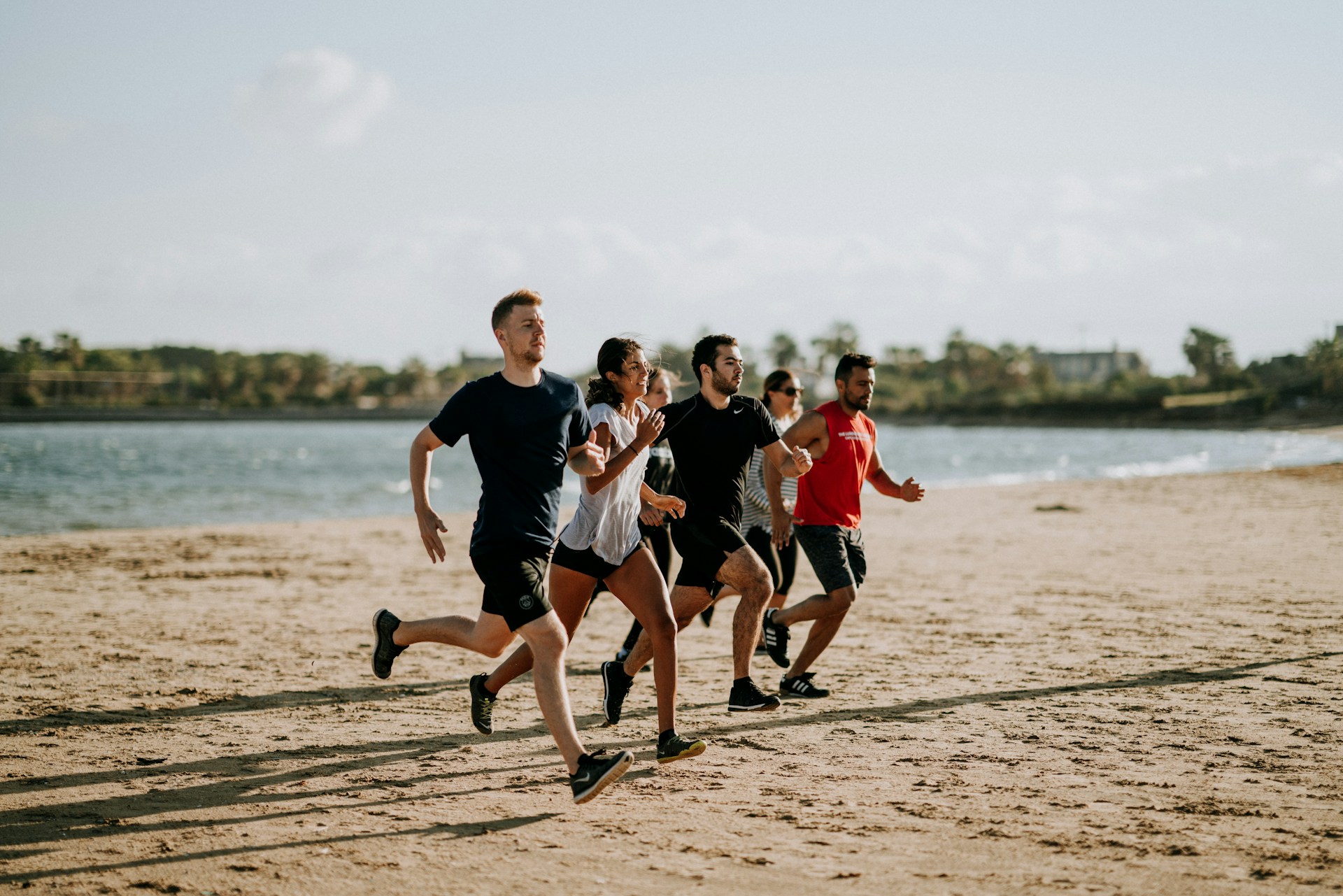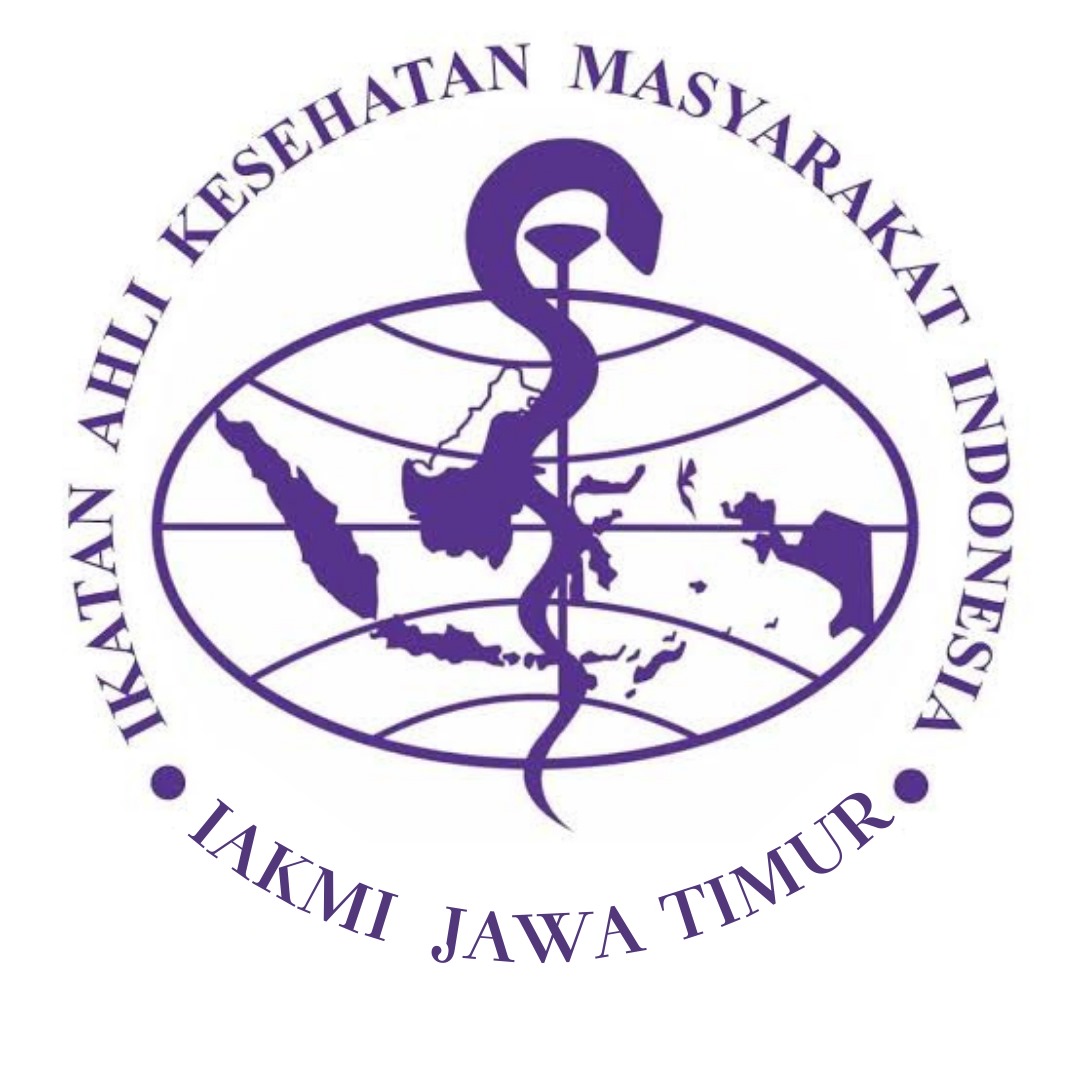Analysis of the Relationship between Physical Activity, Sleep Quality, and Nutritional Status in Adolescents

Downloads
Background: The nutritional condition of adolescents is a crucial element of their general health and development, shaped by several factors, including physical activity and sleep quality. Nutritional challenges in East Nusa Tenggara (NTT) encompass both under-nutrition and over-nutrition among adolescents. According to Riskesdas data from 2018, the prevalence of malnutrition among adolescents in NTT was 25.7% for those aged 13-15 years and 26.9% for those aged 16-18 years, while the obesity rate was 16% for adolescents aged 13-15 years. This issue is further intensified by insufficient physical exercise and poor sleep. Despite the existence of several interventions targeting dietary behaviors, the correlation between these elements and nutritional health remains underexplored, particularly in NTT.
Objectives: This study aimed to examine the correlation between physical activity, sleep quality, and nutritional status in teenagers aged 15 to 18 years at SMK Negeri 3 Kupang, East Nusa Tenggara. This study sought to determine the primary determinants factors affecting the nutritional status of teenagers, particularly in regions experiencing intricate dietary challenges such as NTT.
Methods: This research used a cross-sectional study design, conducted in April 2024 at SMK Negeri 3 Kupang. A total of 221 students were selected using the probability sampling technique. Physical activity was categorized into mild, moderate, and vigorous activities, assessed by the Physical Activity Level (PAL) questionnaire. Sleep quality was assessed via the Pittsburgh Sleep Quality Index (PSQI), while nutritional status was determined by body mass index (BMI). The correlation test was carried out using Goodman and Kruskal gamma and strengthened by the Chi-square test to compare the distribution of nutritional status in various categories of physical activity and sleep quality.
Results: This study showed no significant correlation between physical activity, sleep quality, and nutritional status, with a p-value greater than 0.05. Despite variations in exercise levels and sleep quality among groups with differing nutritional statuses, the correlation between these characteristics and nutritional status was not statistically significant.
Conclusion: Physical activity and sleep quality alone are sufficient to determine adolescent nutritional health. A more holistic approach that incorporates additional aspects such as nutrition, socioeconomic status, and other characteristics, is required. Effective therapies should focus on enhancing dietary behaviors, augmenting physical activity, managing stress, and fostering improved sleep patterns to elevate adolescent nutritional status.
Batiari, N.M.P., Budiharto, B., Suratmi, T., 2022. Kecemasan Remaja: Faktor-Faktor Risiko berdasarkan Model Ekologi Sosial. Insan Jurnal Psikologi Dan Kesehatan Mental. https://doi.org/10.20473/jpkm.v7i12022.36-53.
Bodur, M., Aydin, A., Yildirim, R., 2025. The overlooked factor: Sleep quality in assessing malnutrition risk and nutritional status in adolescents with cystic fibrosis. Sleep Medicine. 127, 120–126.
Bustami, A., Ikhssani, A., 2022. Obesitas dan Gangguan Tidur pada Remaja: Tinjauan Pustaka. https://doi.org/10.36911/nutrient.v2i1.1310.
Detha, A.I.R., Maranatha, G., Riwu, M., Datta, S.C.U., 2022. Pelatihan Pengolahan Pangan Sumber Protein pada Kelompok Pemberdayaan Perempuan dalam Upaya Mencegah Stunting Di Desa Fatumonas, Kecamatan Amfoang Tengah, Kabupaten Kupang. International Journal of Community Service Learning. https://doi.org/10.23887/ijcsl.v6i2.47195.
Fabbri, M., Beracci, A., Martoni, M., Meneo, D., Tonetti, L., Natale, V., 2021. Measuring Subjective Sleep Quality: A Review. Int J Environ Res Public Health. https://doi.org/10.3390/ijerph18031082.
Fitri, A., Setiarini, T., 2022. Dampak Gangguan Tidur terhadap Status Gizi pada Remaja. Jkep. https://doi.org/10.32668/jkep.v7i2.1030.
Gifari, N., Sitoayu, L., Nuzrina, R., Ronitawati, P., Kuswari, M., Prasetyo, T.J., 2022. The Association of Body Image, Percent Body Fat, Nutrient Intake, Physical Activity Among Adolescent. Nutrition & Food Science. https://doi.org/10.1108/nfs-10-2021-0305.
Guazzelli Williamson, V., Dilip, A., Dillard, J.R., Morgan-Daniel, J., Lee, A.M., Cardel, M.I., 2020. The influence of socioeconomic status on snacking and weight among adolescents: A scoping review. Nutrients 12, 167.
Hartini, D.A., Dewi, N.U., Aiman, U., Nurulfuadi, N., Ariani, A., Fitrasyah, S.I., 2022. Hubungan Aktivitas Fisik dan Pengetahuan Gizi dengan Status Gizi Remaja Pasca Bencana Di Kota Palu. Ghidza Jurnal Gizi dan Kesehatan. https://doi.org/10.22487/ghidza.v6i1.444.
Hasanah, S.U., 2022. Hubungan Persepsi Body Image dan Tingkat Ekonomi dengan Status Gizi Remaja Putri Di Kabupaten Nabire Provinsi Papua. Jurnal Kesmas (Kesehatan Masyarakat) Khatulistiwa. https://doi.org/10.29406/jkmk.v9i3.3745.
Herawahyuni, H., Zainuddin, A., Yasnani, Y., 2023. Faktor yang Mempengaruhi Kejadian Stunting pada Balita Usia 6-59 Bulan Di Wilayah Kerja Puskesmas Benu-Benua, Kecamatan Kendari Barat, Kota Kendari Tahun 2022. https://doi.org/10.37887/jgki.v4i1.43103.
Irdiana, W., Nindya, T.S., 2017. Hubungan Kebiasaan Sarapan dan Asupan Zat Gizi dengan Status Gizi Siswi SMAN 3 Surabaya. Amerta Nutrition. https://doi.org/10.20473/amnt.v1i3.6249.
Ismiati, I., Suri, D., 2018. Hubungan Pola Makan dan Aktivitas Fisik dengan Status Gizi pada Remaja Di Sma Negeri 2 Sigli Kabupaten Pidie. Journal of Healthcare Technology and Medicine. https://doi.org/10.33143/jhtm.v3i1.1012.
Juniartha, I.G.N., Darmayanti, N.P.E., 2020. Gambaran Status Gizi Siswa Sekolah Menengah Pertama (Smp) Di Kuta, Bali. Coping Community of Publishing in Nursing. https://doi.org/10.24843/coping.2020.v08.i02.p04.
Kasmarini, F., Andriani, E., Sabrina, S., 2023. The Relationship between Fast Food Consumption, Pocket Money, and Quality of Sleep with Over Nutrition in Adolescents. Jurnal Gizi Prima (Prime Nutrition Journal). https://doi.org/10.32807/jgp.v8i2.400.
Khairunnisa, A., Said, I., Wikanti, C.Z.A., 2023. Hubungan Pola Makan, Aktivitas Fisik, dan Gangguan Menstruasi dengan Status Gizi Remaja Putri Di SMAN 1 Tangerang Selatan. https://doi.org/10.62358/mgii.v1i2.13.
Khan, D.S.A., Das, J.K., Zareen, S., Lassi, Z.S., Salman, A., Raashid, M., Dero, A.A., Khanzada, A., Bhutta, Z.A., 2022. Nutritional status and dietary intake of school-age children and early adolescents: systematic review in a developing country and lessons for the global perspective. Frontiers in Nutrition. 8, 739447.
Kim, G., Lee, J., 2019. Systematic Review of the Pittsburgh Sleep Quality Index Used for Measuring Sleep Quality Among Adults with Trauma Experiences. Korean Journal of Adult Nursing. https://doi.org/10.7475/kjan.2019.31.4.337
Liu, D., Kahathuduwa, C., Vazsonyi, A.T., 2021. The Pittsburgh Sleep Quality Index (PSQI): Psychometric and clinical risk score applications among college students. Psychological Assessment 33, 816.
Matias, C.N., Cardoso, J., Cavaca, M.L., Cardoso, S., Giro, R., Vaz, J., Couto, P.A., Dores, A.R., Ferreira, T.B., Tinsley, G.M., others, 2023. Game on: A cross-sectional study on gamers’ mental health, Game patterns, physical activity, eating and sleeping habits. Computers in Human Behavior. 148, 107901.
Muchtar, F., Sabrin, S., Effendy, D.S., Lestari, H., Bahar, H., 2022. Pengukuran Status Gizi Remaja Putri sebagai Upaya Pencegahan Masalah Gizi Di Desa Mekar Kecamatan Soropia Kabupaten Konawe. Abdi Masyarakat. https://doi.org/10.58258/abdi.v4i1.3782.
Narciso, J., Silva, A.J., Rodrigues, V., Monteiro, M.J., Almeida, A., Saavedra, R., Costa, A.M., 2019. Behavioral, contextual and biological factors associated with obesity during adolescence: A systematic review. PLoS One 14, e0214941.
Noviyanti, N.P.A.W., Widayati, K., Daryaswanti, P.I., Febianingsih, N.P.E., Dewi, N.L.M.A., Astutik, W., Sulistyadewi, N.P.E., 2023. Status Gizi Remaja Putri Di Kecamatan Jembrana Kabupaten Negara. Bali Health Published Journal. https://doi.org/10.47859/bhpj.v5i2.429.
Nuryani, N., 2019. Gambaran Pengetahuan, Sikap, Perilaku dan Status Gizi pada Remaja Di Kabupaten Gorontalo. Jurnal Dunia Gizi. https://doi.org/10.33085/jdg.v2i2.4473.
Pangestika, G., Lestari, D.R., Setyowati, A., 2018. Stres dengan Kualitas Tidur pada Remaja. Dunia Keperawatan Jurnal Keperawatan Dan Kesehatan. https://doi.org/10.20527/dk.v6i2.4412.
Pitoy, F.F., Tendean, A.F., Rindengan, V.C.C., 2022. Kualitas Tidur dan Indeks Massa Tubuh pada Remaja. Nutrix Journal. https://doi.org/10.37771/nj.vol6.iss2.836.
Pool, J., 2022. The QCS Pool Activity Level (PAL) Instrument for Occupational Profiling: A Practical Resource for Carers of People with Cognitive Impairment 5th edn. Jessica Kingsley Publishers.
Praditasari, J.A., Sumarmik, S., 2018. Asupan Lemak, Aktivitas Fisik dan Kegemukan pada Remaja Putri Di SMP Bina Insani Surabaya. Media Gizi Indonesia. https://doi.org/10.20473/mgi.v13i2.117-122.
Pradnyaparamita, A., Muniroh, L., Atmaka, D.R., 2023. Hubungan Kualitas Tidur dan Stres dengan Pola Makan Remaja Di Kota Kediri saat Pandemi COVID-19. Media Gizi Kesmas. https://doi.org/10.20473/mgk.v12i2.2023.1007-1013.
Rahmawati, D.P., Indarto, D., Hanim, D., 2021. Correlation of Snacking Frequency, Hemoglobin Levels, Physical Activity and Pocket Money with Nutritional Status in Female Adolescents. Media Gizi Indonesia. https://doi.org/10.20473/mgi.v16i3.207-214.
Ratih, R.H., 2020. Hubungan Perilaku Makan dengan Status Gizi pada Remaja Putri Di SMAN 2 Tambang. Jurnal Smart Kebidanan. https://doi.org/10.34310/sjkb.v7i2.397.
Retnaningrum, G., Dieny, F.F., 2015. Kualitas Diet dan Aktivitas Fisik pada Remaja Obesitas dan Non Obesitas. Journal of Nutrition College. https://doi.org/10.14710/jnc.v4i4.10150.
Sitoayu, L., Aminatyas, I., Angkasa, D., Gifari, N., Wahyuni, Y., 2021. Hubungan konsumsi makanan cepat saji, tingkat stres dan kualitas tidur terhadap status gizi pada remaja putra SMA DKI jakarta. Indonesian Journal of Human Nutrition 8, 55–64.
Supit, E.D., Mayulu, N., Bolang, A.S.L., Kawengian, S.E.S., 2021. Aktivitas Fisik dan Status Gizi Mahasiswa saat Pandemi COVID-19. Jurnal Biomedik JBM. https://doi.org/10.35790/jbm.13.2.2021.31763.
Suryoadji, K.A., Nugraha, D.A., 2021. Aktivitas Fisik pada Anak dan Remaja selama Pandemi COVID-19: Sebuah Tinjauan Sistematis. Khazanah. https://doi.org/10.20885/khazanah.vol13.iss1.art3.
Susmiati, S., 2018. Lama Waktu Tidur dengan Kejadian Obesitas pada Remaja (Case Control Study). Ners Jurnal Keperawatan. https://doi.org/10.25077/njk.13.1.42-49.2017.
Tresnanda, N., Rimbawan, R., 2022. Hubungan Perilaku Makan dan Aktivitas Fisik dengan Status Gizi Mahasiswa IPB Masa Pembelajaran Jarak Jauh. Jurnal Ilmu Gizi dan Dietetik. https://doi.org/10.25182/jigd.2022.1.1.1-7.
Widiani, N.K.A.S., Mayangsari, A.S.M., Witarini, K.A., Pratiwi, I.G.A.P.E., 2024. Hubungan antara Status Gizi, Asupan Zat Besi dan Seng dengan Prestasi Belajar pada Remaja Putri Di SMP Santo Yoseph. E-Jurnal Medika Udayana. https://doi.org/10.24843/mu.2024.v13.i02.p17.
Woran, K., Kundre, R.M., Pondaag, F.A., 2021. Analisis Hubungan Penggunaan Media Sosial dengan Kualitas Tidur pada Remaja. Jurnal Keperawatan. https://doi.org/10.35790/jkp.v8i2.32092.
Zalda, F., Alamsyah, P.R., 2024. Relationship of Sweet Caffeinated Beverages Consumption and Sleep Quality with Nutritional Status in Adolescent. Media Gizi Indonesia. https://doi.org/10.20473/mgi.v19i2.164-171.
Zhuang, J., Wu, J., Fan, L., Liang, C., 2022. Observation on the Clinical Efficacy of Traditional Chinese Medicine Non-Drug Therapy in the Treatment of Insomnia: A Systematic Review and Meta-Analysis Based on Computer Artificial Intelligence System. Computational Intelligence and Neuroscience. https://doi.org/10.1155/2022/1081713.
Zulaily, N., Ahmad, A., Shahril, M.R., 2024. Associated Factors of Physical Activity Among 12 Years Old School Adolescents in Terengganu, Malaysia. Malaysian Journal of Medicine & Health Sciences.20.
Copyright (c) 2025 Asmulyati S. Saleh, Ahmad David Royyifi Arifin, Nuimkhayat

This work is licensed under a Creative Commons Attribution-ShareAlike 4.0 International License.
Media Gizi Kesmas by Unair is licensed under a Creative Commons Attribution-ShareAlike 4.0 International License.
1. The journal allows the author(s) to hold the copyright and to retain the publishing right of the article without restrictions.
2. The legal formal aspect of journal publication accessibility refers to Creative Commons Attribution-Share-Alike (CC BY-SA).
3. The Creative Commons Attribution-Share-Alike (CC BY-SA) license allows re-distribution and re-use of a licensed work on the conditions that the creator is appropriately credited and that any derivative work is made available under "the same, similar or a compatible license”. Other than the conditions mentioned above, the editorial board is not responsible for copyright violations.



















